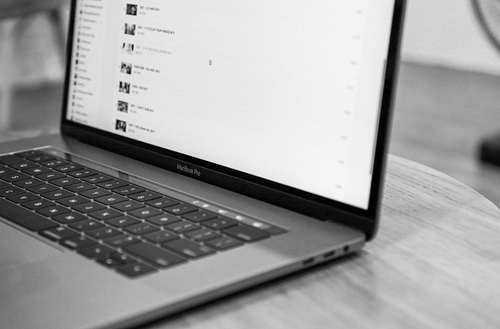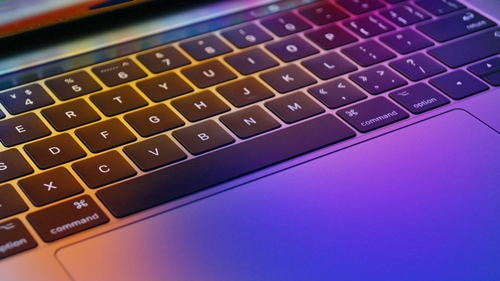MacBook Pro 2018 vs MacBook Pro 2017

The MacBook Pro range represents the best, and most expensive, versions of Apple’s MacBook laptops. New models have been released yearly since 2016, and while each iteration is rarely a huge step-up from the previous year’s version, they have been steadily improving the performance and hardware.
In this article, we’ll be taking a look at the top offerings from 2017 and 2018, in both 13” and 15” flavors, to help you decide which, if any, you may want to upgrade to.
What Hasn’t Changed?
In terms of external design, there is very little to distinguish between the 2017 and 2018 models. They share the same dimensions and weight, and are available in the same choices of color – Silver, and Space Grey.
In terms of hardware, the camera is also the same, though at 720p it’s better than many other onboard webcams on other laptops. The Wi-Fi capabilities remain unchanged, but as the integrated receiver in all of the models works on the commonly available wireless protocols, that’s not too much to worry about.

The Key Upgrades
While they may look pretty much identical, the newer models have received upgrades to the majority of the hardware under the hood.
The 2018 MacBook Pros are faster pretty much across the board. They are supplied with the next generation of Intel processors, upgrading from Kaby Lake to Coffee Lake. They have more cores, bigger caches, and overall better performance when multi-threading and performing demanding tasks, and Apple has said this represents a speed boost of up to 70% over the 2017 laptops.
Memory options are nearly the same as the 2017 models, except for the 2018 15” version, which has been upgraded to DDR4 with a higher base clock speed, resulting in improved performance. It can also now be upgraded to 32 GB at the time of purchase, double that of the previous model, and very helpful if you have to perform highly demanding tasks on the go.
The onboard graphics of the 13” models has always been a weak point of the line, and this has changed little in the 2018 release, though the onboard eDRAM has been doubled. While the base 15” version has also only seen a minor upgrade, it now has the option of a significantly more powerful dedicated graphics card than its predecessor, if you opt for a model equipped with the Radeon Pro Vega 20. This card is comparable to many of the mid-to-high tier cards available on desktops, and will easily outperform the 2017 MacBook Pro.

There are a few more improvements worth mentioning. The 2018 models are equipped with the second generation of Apple’s T Series security chips, which now provides real-time encryption and decryption on the inbuilt SSD, as well as enabling the “Hey Siri” feature missing from the 2017 laptops. Speaking of storage, the 2018 15” also has the option to upgrade to a 4 TB SSD, up from the previous 2 TB maximum.
Bluetooth capabilities have been improved to the 5.0 version in the newer laptops, providing higher potential throughput speeds. The newer MacBooks have also had Apple’s True Tone technology added, which automatically detects the light around you to adjust the color balance on your screen to improve readability and comfort of use.

Specifications
If you want to get into the nitty-gritty of exactly what has changed between the 2017 and 2018 MacBook Pros, you can compare and contrast using this table.
| MBP 2017 13” | MBP 2017 15” | MBP 2018 13” | MBP 2018 15” | |
| Display | 13.3”, 2560 × 1600 (16:10), 227 ppi with Wide color (P3) gamut, 500-nits | 15.4”, 2880 × 1800 (16:10), 220 ppi with Wide color (P3) gamut, 500-nits | 13.3”, 2560 × 1600 (16:10), 227 ppi with Wide color (P3) gamut, 500-nits, True Tone display | 15.4”, 2880 × 1800 (16:10), 220 ppi with Wide color (P3) gamut, 500-nits, True Tone display |
| Camera | FaceTime HD (720p) | FaceTime HD (720p) | FaceTime HD (720p) | FaceTime HD (720p) |
| Processor | 3.1 GHz dual-core Intel Core i5 Kaby Lake (7267U), up to 3.5 GHz, 4 MB L3 cache
(Optional upgrade – 3.3 GHz i5-7287U, up to 3.7 GHz, 4 MB L3 cache)
(Optional upgrade – 3.5 GHz i7-7567U, up to 4.0 GHz, 4 MB L3 cache) | 2.9 GHz quad-core Intel Core i7 Kaby Lake (7820HQ), up to 3.9 GHz, 8MB L3 cache
(Optional upgrade – 3.1 GHz i7-7920HQ, up to 4.1 GHz, 8 MB L3 cache) | 2.3 GHz quad-core Intel Core i5 Coffee Lake (8259U), up to 3.8 GHz, 6 MB L3 cache
(Optional upgrade – 2.7 GHz i7-8559U, up to 4.5 GHz, 8 MB L3 cache) | 2.6 GHz six-core Intel Core i7 Coffee Lake (8850H), up to 4.3 GHz, 9 MB L3 cache
(Optional upgrade – 2.9 GHz i9-8950HK, up to 4.8 GHz, 12 MB L3 cache) |
| System Bus | 4 GT/s OPI (On Package DMI 3.0 interconnect Interface) (Max. theoretical bandwidth: 4 GB/s) | 8 GT/s DMI 3.0 (Max. theoretical bandwidth: 3.94 GB/s) | 4 GT/s OPI (On Package DMI 3.0 interconnect Interface) (Max. theoretical bandwidth: 4 GB/s) | 8 GT/s DMI 3.0 (Max. theoretical bandwidth: 3.94 GB/s) |
| Memory | 8 GB built-in onboard RAM (not upgradeable)
(Optional 16 GB RAM configuration available at time of purchase only)
| 16 GB built-in onboard RAM (not upgradeable)
| 8 GB built-in onboard RAM (not upgradeable)
(Optional 16 GB RAM configuration available at time of purchase only) | 16 GB built-in onboard RAM (not upgradeable)
(Optional 32 GB RAM configuration available at time of purchase only)
|
| Memory Speed | 2133 MHz PC3-17000 LPDDR3 SDRAM | 2133 MHz PC3-17000 LPDDR3 SDRAM | 2133 MHz PC3-17000 LPDDR3 SDRAM | 2400 MHz PC4-19200 DDR4 SDRAM |
| Graphics | Intel Iris Plus Graphics 650 with 64 MB eDRAM | Intel HD Graphics 630
AMD Radeon Pro 560 with 4 GB of GDDR5 memory and automatic graphics switching (2.9 GHz) | Intel Iris Plus Graphics 655 with 128 MB eDRAM | Intel UHD Graphics 630
AMD Radeon Pro 560X with 4 GB of GDDR5 memory and automatic graphics switching (2.6 GHz)
(Optional Radeon Pro Vega 16 with 4 GB of HBM2 memory or Radeon Pro Vega 20 with 4GB of HBM2 memory) |
| Storage | 256 GB or 512 GB or 1 TB SSD | 512 GB or 1 TB or 2 TB built-in SSD | 256 GB or 512 GB or 1 TB or 2 TB | 512 GB or 1 TB or 2 TB or 4 TB built-in SSD |
| Security Chip | Apple T1 | Apple T1 | Apple T2 | Apple T2 |
| Bluetooth | Bluetooth 4.2 | Bluetooth 4.2 | Bluetooth 5.0 | Bluetooth 5.0 |
| Wi-Fi | Integrated 802.11a/b/g/n/ac up to 1.3 Gbit/s | Integrated 802.11a/b/g/n/ac up to 1.3 Gbit/s | Integrated 802.11a/b/g/n/ac up to 1.3 Gbit/s | Integrated 802.11a/b/g/n/ac up to 1.3 Gbit/s |
| Ports | Four ports, two left-hand ports for full performance, supporting two 4096×2304 displays or one 5120×2880 (MST) display | Four ports full performance supporting four 4096×2304 displays or two 5120×2880 (MST) displays | Four ports full performance
supporting two 4096×2304 displays or one 5120×2880 (MST) display | Four ports full performance supporting four 4096×2304 displays or two 5120×2880 (single-stream each, supports DisplayPort 1.4) displays |
| Battery | 49.2 Wh | 76 Wh | 58.0 Wh | 83.6 Wh |
| Weight | 3.02lb (1.37kg) | 4.02lb (1.83kg) | 3.02lb (1.37kg) | 4.02lb (1.83kg) |
| Dimensions | 11.97in (30.41cm) wide × 8.36in (21.24cm) deep × 0.59in (1.49cm) high | 13.75in (34.93cm) wide × 9.48in (24.07cm) deep × 0.61in (1.55cm) high | 11.97in (30.41cm) wide × 8.36in (21.24cm) deep × 0.59in (1.49cm) high | 13.75in (34.93cm) wide × 9.48in (24.07cm) deep × 0.61in (1.55cm) high |
You’re My World, Pro
While in some ways the 2018 Macbook Pro models only make modest improvements over the previous year’s offerings, there are a number of optional upgrades that can significantly boost the performance of the newer versions. If you’re willing to shell out for them, of course.
What do you think of the 2018 MacBook Pro in comparison to 2017’s version? Is it enough of a step-up to entice you to upgrade? Let us know your thoughts in the comments below.
















